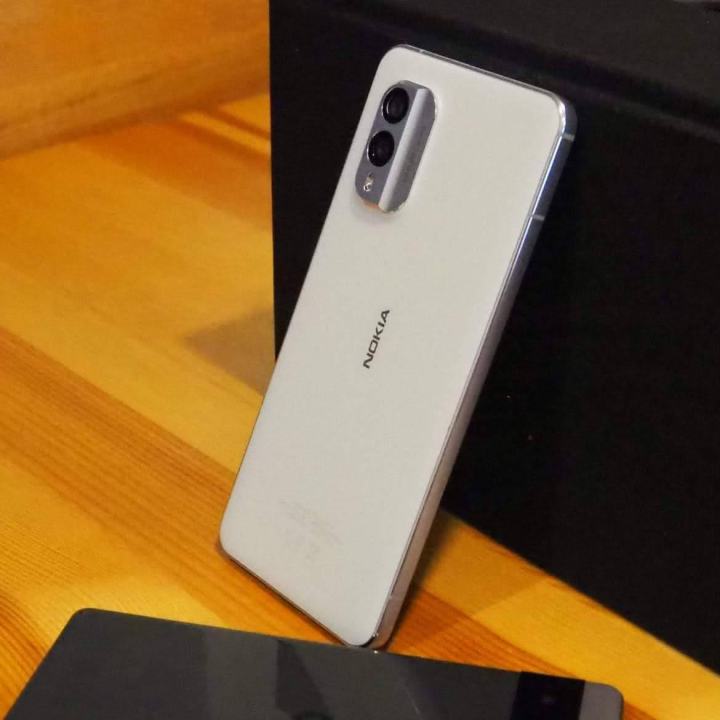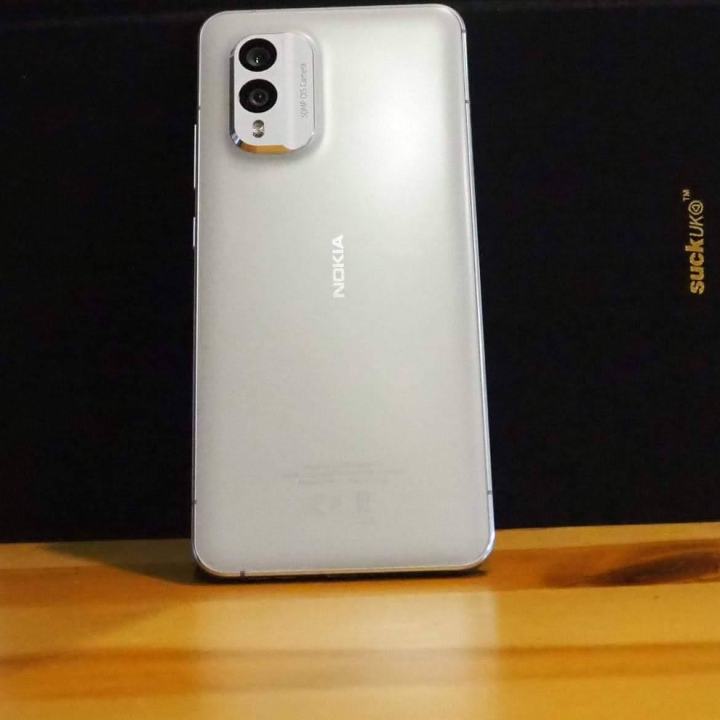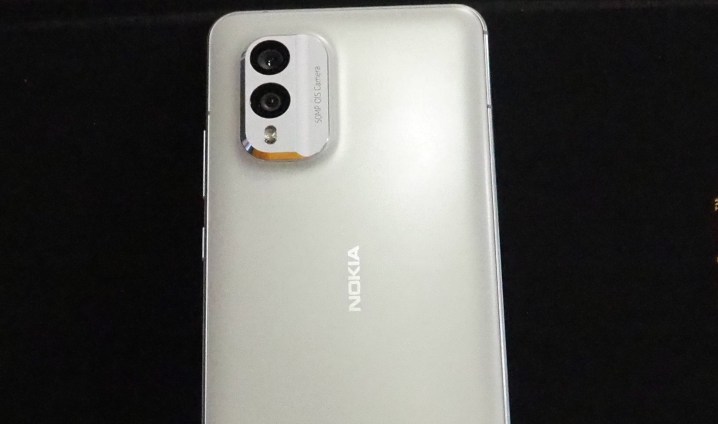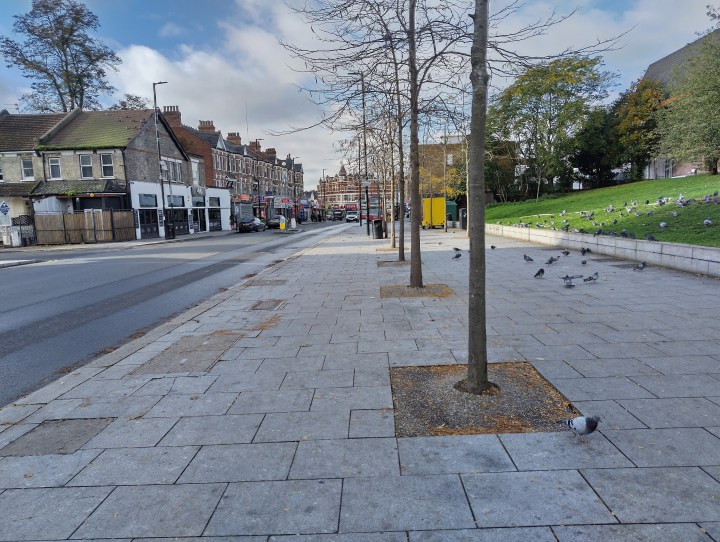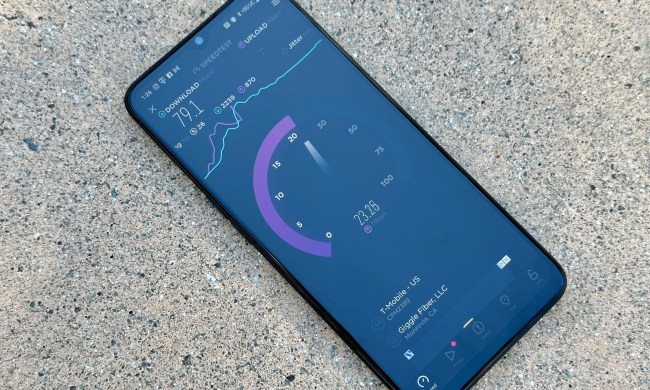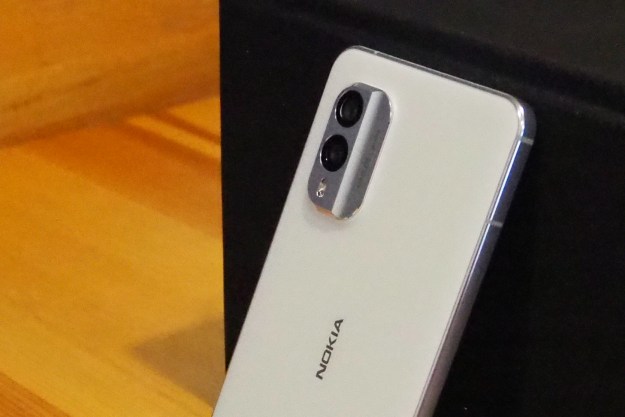
“HMD Global's newest Nokia is its best phone in years — but that's not saying much. It's a good phone, but not the special one HMD needed.”
- Beautiful screen
- Design is lightweight and well-balanced
- Fast charging speeds
- Clean Android software
- Long software update support cycle
- Mediocre camera
- Some performance stutters
- Disappointing battery life
- Poor update history
HMD Global is back with its first kinda-premium phone since the middle of the pandemic in 2020. The Nokia X30 5G is Nokia’s latest offering, and it’s currently on sale in the U.K. priced at 400 British pounds — roughly the same price as competing phones from Google and Apple.
I’ve been using the Nokia X30 over the course of a week, and I’ve found it to be a very adequate phone with nothing particularly standing out. That’s fine in a bubble, but at this very competitive price point, it turns into a problem.
Nokia X30 5G design
The Nokia X30 reminds me a bit of the Nokia Lumia Icon. It’s a polycarbonate phone with metal sides. Of course, it’s 2022, and the passage of time means we can find things like Gorilla Glass Victus protecting the front display, a camera island on the rear, and a camera hole in the front. The display measures 6.43-inches tall, so it’s just a little bit taller than the Pixel 7. It has very thin bezels, and the overall footprint is smaller than it could be.
Breaking it down into detail, there’s metal banding all over the sides that makes it feel premium. Both this and the polycarbonate on the back are recycled. On the right side, as with all Nokia phones, you’ll find the power button (which doubles as a Google Assistant key) and the volume rocker. The Assistant key is annoying for those who’d like faster access to their phone’s shutdown capabilities, but it’s perfectly fine once you get used to it.
The Nokia X30 5G comes in either Cloudy Blue or Ice White color options. My unit is the Ice White one, and it looks rather elegant. Swap out the polycarbonate on the rear for a more premium material, and you could easily see this phone as a true flagship.
There’s no headphone jack — thank Apple for that. There’s a SIM tray, no thanks to Apple, and this phone supports eSIM, so you can have two SIMs on it. USB-C is here too, so all your connectors can work with the X30. That’s great because there’s no charger in the (recyclable) box — HMD says it’s to save the environment. As with every other company, we’re tempted to nod along at the obvious display of greed, but HMD has a stronger case to make here, and we’ll get to that toward the end.
Nokia X30 5G screen
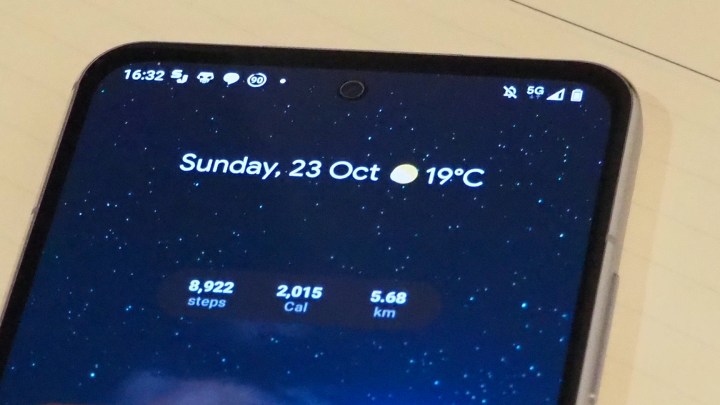
The 6.43-inch PureDisplay has a fingerprint sensor embedded underneath. It’s got its good parts and bad. The display gets bright enough, though it peaks at 700 nits. Colors pop and look rich whether watching Bleach on Disney Plus or Jago on YouTube. Reading a few books on the train, I found it to be an immersive experience as the content filled the uninterrupted screen neatly.
The bad? HMD’s not the best at screen brightness control. The auto-brightness kept being too slow to react to environmental changes — sometimes not even at all. This led to a situation where I was in complete darkness, yet the phone’s screen remained as if the light switch was on, and another where I could see the display flickering and changing brightness in a really jarring way. It’s fast and unnoticeable most of the time, but it’s annoying when you notice it.
One thing that’s not annoying, however, is the inclusion of a 90Hz display panel. Not all premium smartphone makers offer it, and some even sell $1,000 phones with 60Hz displays. As such, it’s nice to see HMD not skimping on this.
Nokia X30 5G performance
Nokia has equipped the X30 5G with a Qualcomm Snapdragon 695 processor. It’s one of Qualcomm’s cheaper chips, and it brings the phone experience down in more ways than one.
Let’s be clear: It’s a capable chip that can handle light mobile gaming on titles like Marvel Future Revolution without heating up too much, but it’s not the choicest chip for a phone that cost 400 pounds.
While the 90Hz display is commendable, there’s enough lag when scrolling and swiping around the interface to remind me of the processor more than the cost. Though HMD says you’ll be keeping this for three years, I’m not entirely sold on its long-term viability, given the lag at this point.
Nokia X30 5G camera
- 3. The X30’s performance in poor light wasn’t the best.
The Nokia X30 marks the brand’s return to Pureview for the first time in years. Don’t be fooled by the Pureview branding, though — this isn’t the Pureview of the old Lumia days.
The Nokia X30 5G has a perfectly adequate camera. HMD didn’t skimp on hardware here with those nonsense 2MP depth sensors other smartphone makers are tempted to work with. Instead, the X30 has a decent dual-camera setup. The main camera is a 50-megapixel affair, while a 12MP ultrawide lens backs it up. A 16MP camera sits on the front for selfies, video calling, and face unlock support.
Ultimately, I feel the camera was one part of the phone that suffered from the choice of processor. While it was fine, it would often be slower than I’d prefer when capturing images or switching between lenses. If you take too many photos at once or are in a dark room, then the camera slows down far too much for my liking.
The camera quality is variable here. It doesn’t do well in dark lighting, producing quite smudged-up photos a few times. One thing I did notice was that the X30 has a lower threshold for what it considers “dark” than other phones. Trying to capture a sunset photo saw it kick me into night mode, whereas a Pixel 6a had no such issues.
I’m also a little too used to the Pixel’s color grading — especially when taking selfies with darker skin. Aggressive sharpening and AI beautification mean that, most times, I wasn’t sold on the quality of the front camera. Your mileage may vary here.
Overall, the camera is fine. Situate yourself in bright lighting with a steady hand (or not so steady, considering the presence of optimal image stabilization), and this camera has potential. When it gets a little darker, a little cloudier, a little murkier — you may find yourself wishing for something better. For a phone with the Pureview branding, it’s a little disappointing.
Nokia X30 5G software and battery
The Nokia X30 comes with a stock version of Android 12. It’ll get Android 13 at some point in the future, and HMD promises three years of software updates. I’ve been keeping track of Nokia’s software rollouts for years now, and the company has steadily deteriorated. It may well meet its promise of three years of service, but don’t hold your breath for a timely release. I did check with HMD for an ETA on when Android 13 would hit the Nokia X30, but didn’t get a response in time for publication. We will update thss story when we hear back.
As for the phone itself, the software is fine: clean, untouched Android — for better or worse. Unlike Motorola or Google, there aren’t cool customization features or fancy widgets, or even a smart launcher. One of the few concessions here appears to be the inclusion of Express VPN, but that’s easily ignored.
The pros to this are that using the X30 is easy to learn, It’s familiar, clean, and speedy. All your favorite Google Play apps and games are here, and Material You brings a touch of color systemwide.
All that lightness means you’ll also get a lot of use from the 4200 mAh battery. Nokia says you can get up to two days of battery out of it with normal use, but I regularly end days of active use with the Nokia X30 5G in need of a charge. There’s a super battery saver mode to squeeze more use out of a single charge, but that essentially turns the X30 into a dumb phone, kills the always-on display, and is best saved for extreme cases.
There was no surprise battery drain, which means the performance is predictable daily. If you don’t have the social life of a mid-20s male in London, you should be fine with the X30’s battery. If you do find yourself running low on charge before an outing, the support for 33-watt charging speeds should help you catch up while you shower.
Nokia X30 5G price and availability
The Nokia X30 5G will set you back 400 pounds from Nokia’s store in the U.K. (roughly $460 U.S.) for the 128GB model with 6GB of RAM. If you’d like more RAM and storage, the company offers a 256GB model with 8GB of RAM at 440 pounds ($511). The latter was the one used for this review.
The Nokia X30 is adequate but overpriced
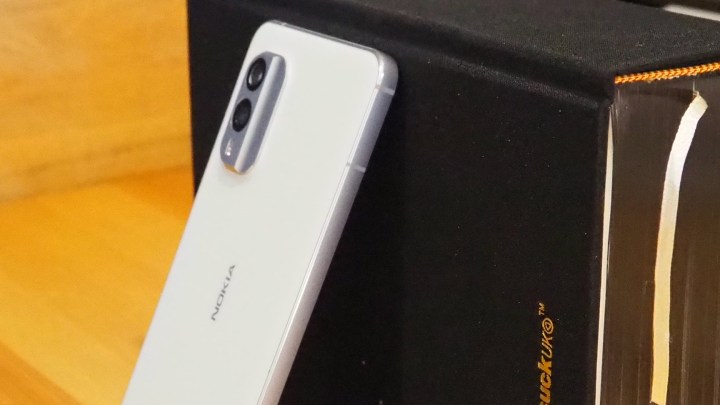
The Nokia X30 is simply too expensive for what it offers. It’s a perfectly fine phone in the abstract that you could assume was priced at 350 pounds or less. That calculus changes when it’s 400 pounds in this very competitive market. For 380 pounds, the Motorola Edge 30 will offer you a similar stock Android experience and a more powerful Snapdragon 778 processor. For 400 pounds, you can purchase a Google Pixel 6a or a Samsung Galaxy A53 5G.
Nokia does offer its Circular subscription as a selling point. Upon passing the credit check, you’re able to grab a new X30 for 22 pounds a month — and they’ll even take care of recycling the phone for you when you’re done with it. The unique selling point remains HMD’s environmentalism. The company will let you earn credits, which it calls Seeds of Tomorrow. The longer you stay subscribed to Circular, the more seeds you can access. These seeds can be used as currency to donate to selected environmental causes. It’s something to consider, but not very compelling on its own.
HMD Global’s revival of Nokia has seen the company every so often try and put out a premium-ish phone. Whether it be the Nokia 8, the Nokia 8 Sirocco, Nokia 8.3 5G, or Nokia X30, the company has infrequently tried to recapture the glory of old Nokia. Too often, however, it feels like it merely succeeds in lowering the bar of its previous efforts.
If you can find the Nokia X30 discounted for 50 pounds to 100 pounds less, then it would get a more emphatic recommendation. As it stands, it’s an elegant phone that just can’t compete.
